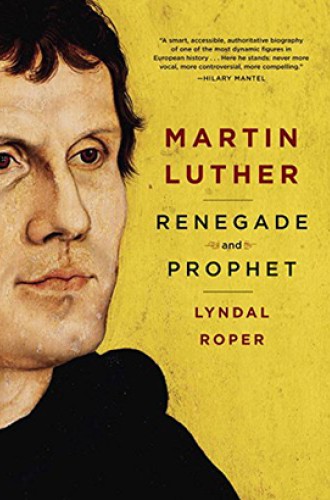Martin Luther in all his complexity
Lyndal Roper's biography is a masterpiece of nuance and balance.
Martin Luther’s admirers have lauded him as a prophet of the gospel, claimed divine inspiration for his theology, and pictured him as a fearless champion of gospel truth. His detractors have portrayed him as a destroyer of Christian unity, accused him of subconsciously projecting upon God his conflicts with his father, and emphasized how he moderated his message to maintain the support of repressive and nondemocratic princes.
In Oxford historian Lyndal Roper’s account Luther appears in his full complexity—theologically driven and politically shrewd, a religious visionary whose thought and life were deeply shaped by his friends and coworkers in Wittenberg.
Roper demonstrates an extraordinary balance of perspective. Employing a full range of scholarly methods, she resists the temptation to claim that any single conflict fully explains Luther’s theology or actions. For example, rather than positing that Luther’s view of God came simply from the reformer’s conflict with his father, she subtly but illuminatingly wonders whether growing up in the mining town of Mansfield gave Luther a sense of the “omnipresence of uncertainty, danger, and risk, . . . which settled in Luther’s soul and gave him a deep conviction of the omnipotence of God: a sense that human beings are utterly exposed in their dealings with him.” Such provocative but historically grounded musings fill the book.
Read our latest issue or browse back issues.
Roper elaborates the ways in which Luther’s theology struck many as innovative (a claim Luther would undoubtedly deny) and demonstrates how he was unafraid to challenge the status quo. In evaluating the strengths of Luther’s personality, Roper also assesses how they sometimes turned into flaws. For example, she notes that Luther was often fueled by anger when he thought the gospel was being compromised, and this anger led to his theological innovation. But she also shows how sometimes his anger and stubbornness became overwhelming, ending friendships with those who might have otherwise been his allies, such as Johannes Agricola.
Luther’s revolution was fueled by printed materials and books. Accordingly, Roper’s biography is richly illustrated with reproductions of paintings and book art, as well as pictures of other material artifacts. Color reproductions of Lucas Cranach the Elder’s paintings provide insight into how art helped spread the Reformation, as do black and white reproductions of several of Cranach’s prints (like “Luther and the Saxon Elector in Front of a Crucifix,” which appeared in the 1546 edition of Luther’s New Testament and demonstrates the significance of the crucifix in Lutheran devotion). Roper’s book also reproduces several of the antipapal propaganda prints that circulated in Luther’s day.
Roper acknowledges that anti-Semitism was present in Luther’s cultural environment, and she argues that it was also integral to his theological method and the way he read scripture. Luther, she notes, was more outspoken in his denouncements of Judaism than were most of his contemporaries. She does not go so far as to link Luther to the rise of Nazism centuries later (as some historians have done), but she offers Luther little forgiveness when it comes to his views of Judaism.
Some theologians may quibble with Roper for her occasional sweeping statements about Luther’s theology. For instance, she writes that “the mature Luther lacked the denigration of the flesh that was so central to other mystical thinkers, paradoxically, because his estimation of humankind was so low; indeed, man was so sinful that a union with God was not possible.” This claim overlooks Luther’s belief that Christ and the Holy Spirit dwell in believers’ hearts in faith. Such a vision isn’t the same kind of union the medieval mystics envisioned, but it represents a form of union with God nonetheless.
Roper’s chapter on sexuality and the body in Luther’s thought is significant. She notes that Luther affirmed the goodness of the material world and was not gnostic in any sense. Indeed, Luther’s sacramental theology acknowledged that bread, wine, and water could be used by God to convey divine grace. Roper rightly notes the parallels between Luther’s sacramental theology and his affirmation of marriage and sexuality. But her claim that his “gloomy anthropology paradoxically freed Luther to take a relaxed view of sexuality” misses the point. His gloomy anthropology meant that he believed we can use any act, no matter how generous it looks to the outside world, for our own selfish and self-serving purposes. Sexual sin may not be worse than any other sin in Luther’s thought, but neither is it less serious. All sins call for transformation by divine grace.
Roper is a social and cultural historian rather than a theologian, and the strength of her book is in the way it draws from history a comprehensive, balanced view of Luther. Of the many new Luther biographies that have emerged this year, Roper’s stands out as a masterpiece by a meticulous scholar.







